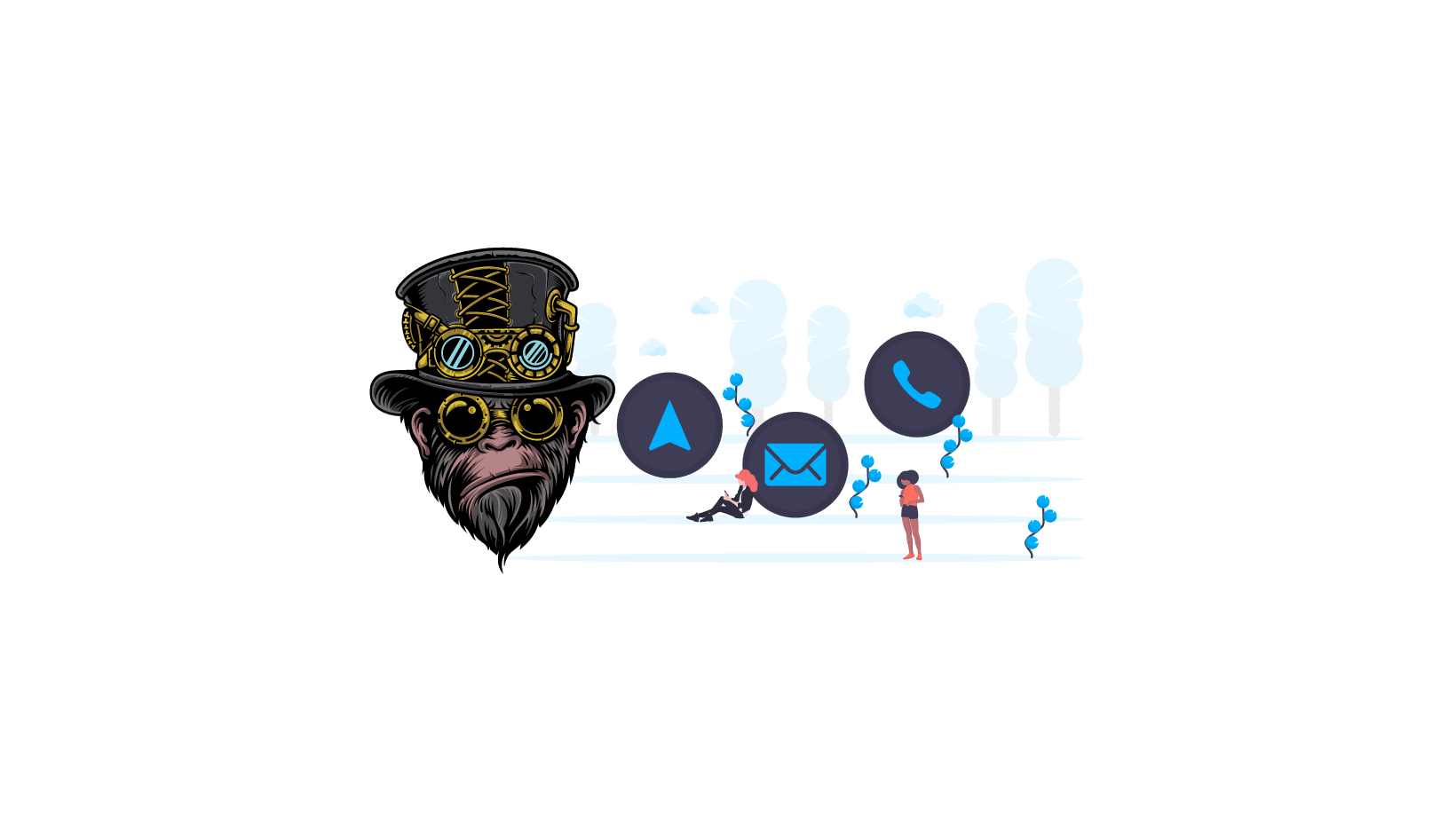In today’s digital age, social media has become an integral part of our lives, connecting us with friends, family, and even strangers from around the world. But what if I told you that there is a hidden side to social media that holds immense power and potential? Welcome to the world of dark social, a term coined to describe the sharing of content through private channels such as email, instant messaging, and private browsing. Decoding dark social is like unraveling a mystery, as it unravels the hidden conversations and engagements that occur outside the public eye. In this article, we will dive deep into the world of dark social and explore its significance for marketers, businesses, and content creators. Get ready to uncover the hidden power of social media sharing and learn how to leverage dark social to enhance your digital marketing strategies.
What is Dark Social?

Dark social refers to the sharing of content through private channels that are not easily trackable by traditional analytics tools. Unlike public social media platforms like Facebook or Twitter, where sharing is visible to everyone, dark social sharing happens in private, one-to-one or small group conversations. These channels include email, instant messaging apps like WhatsApp and Messenger, and even private browsing sessions. Dark social represents a significant portion of social media sharing, with estimates suggesting that it accounts for up to 80% of all sharing activity.
Understanding dark social is crucial for marketers and businesses because it reveals a vast amount of untapped data and insights. By deciphering dark social, we can gain a deeper understanding of our audience’s preferences, interests, and behaviors, allowing us to create more targeted and personalized marketing campaigns.
The Impact of Dark Social on Social Media Sharing
The rise of dark social has had a profound impact on the dynamics of social media sharing. While public social media platforms have democratized content distribution, dark social has introduced a new layer of exclusivity and privacy. People are more likely to share content privately when they feel it is more personal, sensitive, or relevant to a specific group of individuals. This means that dark social sharing often involves higher levels of engagement, as users are more likely to share with intention and purpose.
Moreover, dark social sharing is often driven by trust and personal recommendations. When someone shares content privately, they are essentially endorsing it to their peers, family, or friends. This kind of sharing is seen as more credible and trustworthy, making it highly influential in shaping opinions and driving conversions.
Understanding the Different Types of Dark Social

Dark social encompasses various channels and methods of sharing that occur outside the public eye. Let’s explore some of the most common types of dark social:
1. Email Sharing: Email remains one of the most popular channels for sharing content privately. Whether it’s forwarding an interesting article or sharing a link to a product, email sharing allows individuals to engage in one-to-one conversations and share content directly with specific recipients.
2. Instant Messaging Apps: With the rise of messaging apps like WhatsApp, Messenger, and WeChat, private sharing has become easier than ever. These apps enable users to share content, links, and even entire conversations with individuals or groups, creating a highly engaged and targeted sharing environment.
3. Private Browsing: When users engage in private browsing sessions, their activity is not tracked by traditional analytics tools. This means that any content shared or consumed during private browsing remains hidden from view, making it a significant part of dark social sharing.
Understanding these different types of dark social is crucial for marketers, as it allows us to identify and tap into hidden conversations and engagements that might otherwise go unnoticed. By leveraging dark social, we can gain valuable insights into our audience’s preferences, interests, and behaviors, helping us create more effective marketing strategies.
Dark Social Analytics and Tracking
One of the biggest challenges with dark social is tracking and measuring its impact. Unlike public social media sharing, which can be easily tracked using analytics tools, dark social requires a more nuanced approach. Here are some strategies and techniques to help marketers measure dark social sharing:
1. URL Shorteners: Using URL shorteners like Bitly or Google’s URL shortener can help track the number of clicks and shares a specific link receives. By creating unique shortened URLs for different channels, marketers can gain insights into the effectiveness of their dark social campaigns.
2. UTM Parameters: UTM parameters are tags added to the end of a URL to track the source, medium, and campaign of a particular link. By adding UTM parameters to links shared through dark social channels, marketers can track the performance of their campaigns and attribute conversions to specific channels.
3. Social Sharing Widgets: Implementing social sharing widgets on your website or blog allows visitors to easily share content through various channels, including dark social. These widgets can provide valuable data on the number of shares and clicks generated through dark social channels.
While these methods provide some level of tracking, it’s important to note that they are not foolproof. Dark social sharing is inherently private, and individuals may choose not to use shortened URLs or share content through social sharing widgets. However, by implementing these tracking techniques, marketers can gain a better understanding of the reach and impact of their dark social campaigns.
Strategies to Leverage Dark Social for Your Business
Now that we understand the significance of dark social and how to track its impact, let’s explore some strategies to leverage dark social for your business:
1. Create Shareable and Engaging Content
The key to success in dark social is to create content that is highly shareable and engaging. Focus on creating content that resonates with your target audience and encourages them to share it privately. This can be achieved by telling compelling stories, providing valuable insights, or offering exclusive discounts and promotions.
2. Encourage Social Sharing
While dark social sharing happens privately, you can still encourage your audience to share your content through public social media channels. Implement social sharing buttons on your website and blog to make it easy for visitors to share your content with their social networks. By combining both public and dark social sharing, you can maximize the reach and impact of your content.
3. Personalize Your Marketing Campaigns
Dark social sharing is often driven by personal recommendations and trust. Take advantage of this by personalizing your marketing campaigns based on individual preferences and behaviors. Use data and insights from dark social to deliver targeted content and offers to specific segments of your audience, increasing the likelihood of conversion.
By implementing these strategies, you can harness the power of dark social and enhance your digital marketing efforts. Remember, dark social is a valuable resource that can provide unique insights and opportunities for engagement.
Tools and Techniques to Measure Dark Social Sharing
As we mentioned earlier, tracking dark social sharing can be challenging. However, there are several tools and techniques available to help you measure the impact of your dark social campaigns. Here are some of the most effective ones:
1. Google Analytics: While Google Analytics cannot directly track dark social sharing, it can provide insights into the traffic and conversions generated from different channels. By analyzing the “Direct” traffic segment, you can get an idea of how much traffic is coming from dark social.
2. Social Media Listening Tools: Social media listening tools like Brandwatch or Mention can help you monitor and analyze conversations happening on social media, including dark social channels. These tools can provide valuable insights into the sentiment, reach, and engagement of your dark social campaigns.
3. URL Analytics Tools: There are several URL analytics tools available that can help you track the performance of your shortened URLs. These tools provide detailed statistics on the number of clicks, shares, and conversions generated through different dark social channels.
By using a combination of these tools and techniques, you can gain a better understanding of the impact of your dark social campaigns and make data-driven decisions to optimize your marketing strategies.
Case Studies of Successful Dark Social Campaigns
To truly grasp the power of dark social, let’s take a look at some real-life case studies of successful dark social campaigns:
1. The New York Times
The New York Times implemented a dark social tracking strategy to measure the impact of their content shared through private channels. By using URL shorteners and UTM parameters, they were able to track the performance of their dark social campaigns and discovered that dark social sharing accounted for a significant portion of their overall traffic.
2. Nike
Nike launched a dark social campaign called “You Can’t Stop Us,” which featured a powerful video highlighting the resilience and determination of athletes. The campaign was shared privately through WhatsApp, Messenger, and email, resulting in millions of views and widespread engagement. Nike’s dark social campaign showcased the viral potential of private sharing and the impact it can have on brand awareness.
These case studies highlight the effectiveness of dark social campaigns and the potential for reaching a wider audience through private sharing. By leveraging the power of dark social, businesses can tap into new markets, increase brand awareness, and drive conversions.
Best Practices for Incorporating Dark Social into Your Marketing Strategy
As you embark on your dark social journey, here are some best practices to keep in mind:
1. Understand Your Audience: Gain a deep understanding of your target audience’s preferences, interests, and behaviors. This will help you create content that resonates with them and encourages them to share it privately.
2. Experiment and Test: Dark social is still a relatively new concept, and there is no one-size-fits-all approach. Experiment with different types of content, channels, and strategies to see what works best for your audience.
3. Track and Analyze: Use the tools and techniques mentioned earlier to track and analyze the performance of your dark social campaigns. Monitor key metrics like engagement, conversions, and reach to make data-driven decisions and optimize your strategies.
4. Integrate with Public Social Media: Dark social and public social media channels are not mutually exclusive. Integrate your dark social campaigns with your public social media efforts to maximize reach and impact.
5. Stay Up-to-date: The world of digital marketing is constantly evolving, and dark social is no exception. Stay up-to-date with the latest trends, tools, and techniques to ensure your dark social strategies remain effective and relevant.
Overcoming Challenges and Misconceptions about Dark Social
While dark social holds immense potential, it also comes with its fair share of challenges and misconceptions. Here are some common challenges and how to overcome them:
1. Limited Tracking: As discussed earlier, tracking dark social sharing can be challenging. However, by using a combination of tracking techniques and tools, you can gain valuable insights into the impact of your dark social campaigns.
2. Privacy Concerns: Dark social sharing is often driven by privacy concerns, as individuals prefer to share content privately. Ensure that your campaigns respect user privacy and provide value to your audience, rather than invading their personal space.
3. Content Relevance: To encourage dark social sharing, your content must be relevant, valuable, and engaging. Understand your audience’s needs and preferences, and create content that meets those requirements.
By addressing these challenges and misconceptions, you can unlock the true potential of dark social and leverage it to enhance your digital marketing strategies.
Conclusion: Embracing the Power of Dark Social for Your Brand
Dark social represents a hidden world of social media sharing that holds immense power and potential. By decoding dark social, businesses and marketers can gain valuable insights into their audience’s preferences, interests, and behaviors. This allows for the creation of more targeted and personalized marketing campaigns, driving engagement, conversions, and brand loyalty.
While tracking dark social can be challenging, there are tools and techniques available to measure its impact. By leveraging these tracking methods and adopting best practices, businesses can harness the power of dark social and maximize the reach and impact of their marketing efforts.
So, embrace the power of dark social, unravel its mysteries, and unlock new opportunities for your brand. By incorporating dark social into your marketing strategy, you can connect with your audience on a deeper level, drive meaningful conversations, and propel your brand to new heights in the digital world.

Hello, I’m Ali Raza, the brain behind Digital Realm Trends.
Hailing from the vibrant world of digital marketing, I’ve honed my skills over years. Based on my experience, I’m here to unravel the complexities of digital marketing, analytics and paid marketing, crafted for individuals like you. Join me in uncovering the power of digital marketing tools and strategies, fueled by experimentation and insights.




